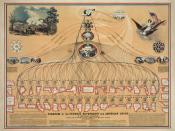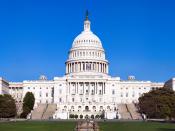In 1996, Federal and state power have come to a test as federal and state welfare officials dispute on how much power the federal government has over how the states use their own money to help poor people under the new welfare law.
The law initially was to move welfare money spending power to the states from the federal government. However numerous conditions are being attached to the federal grant, as the federal interpretations of the "complex, poorly drafted law that if full of ambiguity" come out.
One of the controversies was that the state spending must meet certain Federal criteria, or else it would not count toward the requirements of the new law. When the state receives the federal grant, the state must also continue in spending their own money to preserve the social safety net. The new law states that "qualified state expenditures" count only when the money is used for "eligible families."
The federal interpretation is that the Federal law defines who is eligible, therefore the many restrictions on the use of Federal many would be applied to the use of state money as well.
The states put the tenth amendment as their defense - "The powers not delegated to the United States by the Constitution, nor prohibited by it to the States, are reserved to the States respectively, or to the people." The states argued that while Washington had the authority to regulate the use on federal money, according to the tenth amendment the federal government had no authority to regulate the use of state money. Each state had its own needs. They might want to "spend state money on legal immigrants in nursing homes who are Alzheimer's patients and probably incapable of becoming citizens at this point." The states generally argue that they want to...


